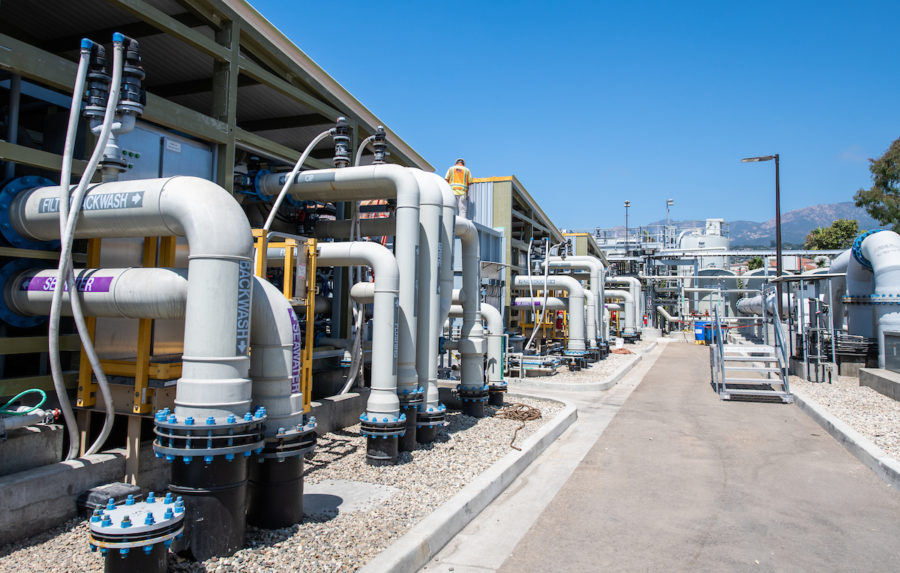Desalination: The last hope for a drying state
Local CA Desalination plant in operation
California’s government has approved the implementation of a $140 million dollar desalination plant in hopes of combating the state’s ever worsening droughts. The Doheny Plant, located in Orange County, will be California’s 13th desalination facility, and be capable of purifying 5 million gallons of seawater daily.
Over the past 3 years, California has faced severe dryness, with 2022 having the driest first 3 months in over 100 years. The state has always had issues supplying enough water for its residents, but in the past this was mostly a result of transportation and water rights issues. Now, water sources themselves are drying up. With reservoirs and snowpacks that feed them at historic lows – and showing no signs of improvement – another source of water is needed.
For a long time, it has seemed like a sick joke that such a drought-riddled state should be next to the largest body of water in the world, and none of it drinkable. Now, things are starting to change.
Desalination had long been infeasible, but as the cost of operations begins to fall and the process becomes more efficient, it may be part of the future of California’s water.
Desalination is the process by which ocean water is made safe to drink, functions by flushing large amounts of water through a series of filters in order to remove salt and other impurities.
However, the process is neither easy nor cheap; the problem is energy. Water is heavy, and pumping up to 5 million gallons through several filters every 24 hours consumes a lot of energy.
The largest desalination plant in California, the Carlsbad Desalination Facility, produces 50 million gallons daily, which accounts for 10% of San Diego County’s daily water usage. Depending on the source of the energy, this has the potential to elevate California’s carbon footprint should desalination become widespread.
An expansion of nuclear power could easily cover the energy needs of large-scale desalination and other needs. Desalination is only a threat to the climate, if climate-threatening energy sources are used – and they don’t have to be.
The other main concern facing desalination is its effect on the environment, mainly in regard to waste. The process produces a high-salinity byproduct known as brine.
Brine is seawater with an extremely high salt content – often 3-8 times as much as the surrounding water. This density causes it to sink to the ocean floor when placed in regular seawater, where it forms underwater lakes.
Due to their high salt and low oxygen concentrations, most marine animals exposed are swiftly killed via toxic shock. High salinity is also toxic to land-based plant life, should it find its way into the ground.
Fortunately, brine loses its toxicity once diluted. Current diffusive disposal methods often consist of either mixing brine with freshwater before returning it to the sea, or releasing it in low concentrations along the ocean floor via pipelines.
California has always struggled for water, now more than ever due to rapid climate change.
The Doheny Plant is currently expected to be complete by 2027. This and other plants could pave the way for a future where one day, water is plentiful and safe to drink.

Claire Brounsten has been a devoted writer since childhood, and with no intentions of stopping anytime soon. Now in 12th grade, and a writer and editor for the Grizzly Gazette’s Community News Team, she’s taking her passions a step forward in the hopes of helping those around her. Currently, she aims to cover topics regarding science, history, politics, and sociology- all of which have captivated her for years- and share that intrigue and information with others. Understanding how the world works, and how the systems in place impact our everyday lives, are the first steps towards navigating it.
So, for Claire, being a journalist means having the opportunity to provide people with the tools needed to make a tangible change within their own lives. She aspires to not only explore how and why the world works the way it does, but enable and empower as many people as she can to change it.



















